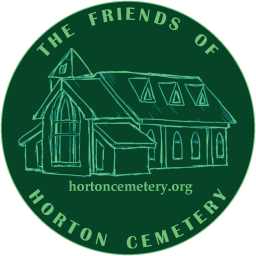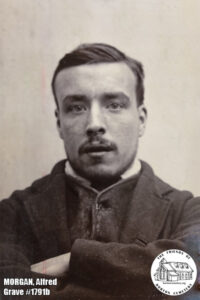b.1855-d.1917
Elizabeth’s parents
Born in the 4th quarter of 1855, Elizabeth Spring was the eldest child of John William Spring and his first wife, Margaret (née Brick). Both parents were born in London, John in Saffron Hill in 1829 and Margaret in St James’s in 1832. Margaret’s parents were both from Ireland.
In his ‘Handbook of London’, published in 1850, Peter Cunningham described Saffron Hill as, ‘a squalid neighbourhood between Holborn and Clerkenwell, densely inhabited by poor people and thieves’. At the time of their marriage in the 4th quarter of 1854 John, a Roman Catholic, was working as a fruit hawker (seller) and Margaret was a book folder in the bookbinding industry.
On the 2nd of July 1855 a John Spring was imprisoned for 9 months at Clerkenwell in Middlesex for ‘larceny from person’. No further details are given in the criminal register so we cannot be sure that this is Elizabeth’s father.
Elizabeth’s siblings
It has not been possible to find the Spring family in the 1861 Census but at the time of the 1871 Census they are living at 24, Drury Lane. John is working as a fruit salesman – probably at the nearby Covent Garden market. Margaret has given birth to five more children, William, born in 1857, Margaret Hannah (1858), John Henry (1860), Arthur Alexander (1869) and Alfred Joseph (1871). Tragically, both John Henry and Alfred Joseph died before reaching the age of one.
The 1880s and 1890s
In the 1881 Census we find the family living at 55, Great Ormond Street. While John is still a fruit salesman, his three eldest children have followed their mother into the bookbinding industry (though Margaret herself is now described as a fruit salesman’s wife). Elizabeth is a book folder, William is an assistant bookbinder and Margaret Hannah is a book sewer. 11 year-old Arthur is still at school.
Sadly, in the 3rd quarter of 1884, Elizabeth’s mother Margaret died, aged 52. Two years later, her father John married Jane Sheldrick at St Mary’s Church in Islington. Jane was aged 48 and working as a machinist. Although originally from Lawston in Cambridgeshire, at the time of her marriage she was living with her married sister, Catherine Ashwood and her family in Islington.
In the 1891 Census John and Jane are living at 44, Charrington Street in St Pancras (Camden). Elizabeth is still working as a book folder but is now lodging at 10, Devonshire Street in Holborn.
The 1900s – the start of Elizabeth’s mental health problems?
Unfortunately, we have no further sightings of Elizabeth until the start of the next decade – a decade that would mark a significant downturn in her fortunes, perhaps as a result of the mental health problems that would dominate the last years of her life.
On the 27th of November 1900 Elizabeth, described as a book folder, was admitted to City Road Workhouse in Holborn. She remained there until the 5th of December when she was discharged at her own request. However, just a few months later, at the time of the 1901 Census, Elizabeth was a patient in the recently-opened Central London District Sick Asylum, built ‘in the country’ in Colindale in Hendon to provide care for the sick poor of London in hospital accommodation separate from the workhouse.
In the same census we learn that Elizabeth’s father, John, is an ‘inmate’ at Nazareth House in Hammersmith. Nazareth House was a Catholic convent and home for the elderly poor and destitute children run by the Poor Sisters of Nazareth. John is now aged 72 and once more a widower, his wife Jane having died in 1895.
Elizabeth’s brothers William and Arthur are living at 10, Wakefield Street in St Pancras and working as market porters. (It has not been possible to ascertain the brothers’ whereabouts after this census.)
Homelessness – and frequent admissions to the workhouse
We do not know how long Elizabeth and John remained in their respective institutions but from the St Pancras Workhouse Creed Register 1904-1906 (in which each inmate’s religious affiliation was recorded) we learn that Elizabeth, having ‘no home’, was admitted to the workhouse on the 12th of February 1905. Her nearest relative is given as her aunt Mary of 10, Eagle Street in Holborn.
On the 21st of May 1906, John was also admitted to the St Pancras workhouse. We do not know when Elizabeth was discharged but she was readmitted just four months later on the 15th of September. Although described as homeless she was discharged at her own request on the 19th of September.
On the 25th of September 1906, Elizabeth was ‘brought by police’ into Northumberland Street Workhouse in Marylebone. Again, she is described as homeless though the register states she has a brother living in Helen’s Place in Bethnal Green. It is not known to which of Elizabeth’s brothers this refers.
Neither do we know when Elizabeth was discharged from Northumberland Street Workhouse, but on the 3rd of October 1906 she was readmitted, described in the register as destitute. The following day Elizabeth’s father John died in the City Road Workhouse. He was 77 years old.
Admission to Long Grove and death
Again, we do not know how long Elizabeth stayed in Northumberland Street Workhouse but a year later, on the 26th of August 1907, she was admitted once more to City Road Workhouse. She was discharged three days later on the 29th of August and transferred to Mitcham Workhouse where she stayed for a month.
On the 30th of September she was transferred to Archway Road Workhouse where she stayed for five weeks before being discharged to Long Grove on the 4th of November 1907. We do not know the nature or the severity of Elizabeth’s mental health problems but she was to remain in Long Grove for the rest of her life. She died there on the 19th of December 1917 aged 62 and was buried in plot 948a in Horton Cemetery.




